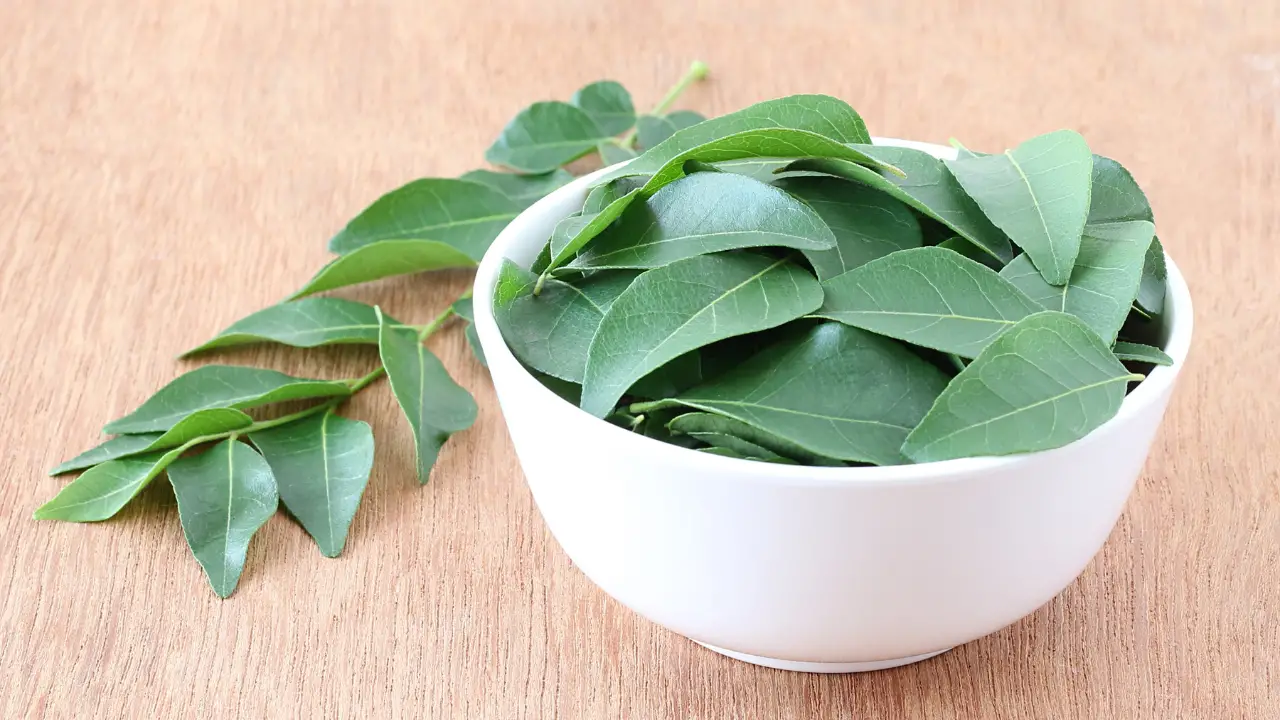Curry leaves are the leaves of the curry tree (Bergera koenigii or Murraya koenigii), a tropical tree native to India and Sri Lanka. If you love Indian cooking, you know that this aromatic herb is an important ingredient. They have a unique earthy, nutty flavor that can enhance many dishes.
Curry leaves are commonly used in Indian cuisine but are also very popular in other cuisines like Sri Lanka, Singapore, Malaysia, and Burma. However, fresh curry leaves are expensive in the United States and can be challenging to find. So when you find them, you want to ensure they stay fresh for as long as possible.
Here are some tips on how to store curry leaves, so they retain their freshness for longer.

3 Best Ways To Store Curry Leaves To Keep Them Aromatic And Fresh
Note: Depending on where you buy your curry leaves, they often need to be cleaned before applying any of the storage methods below. Separate the leaves from the stems and rinse them thoroughly with cold running water using a colander. Then spread all the curry leaves on a kitchen or paper towel and pat them dry really well before storing them.
1. Freeze The Curry Leaves
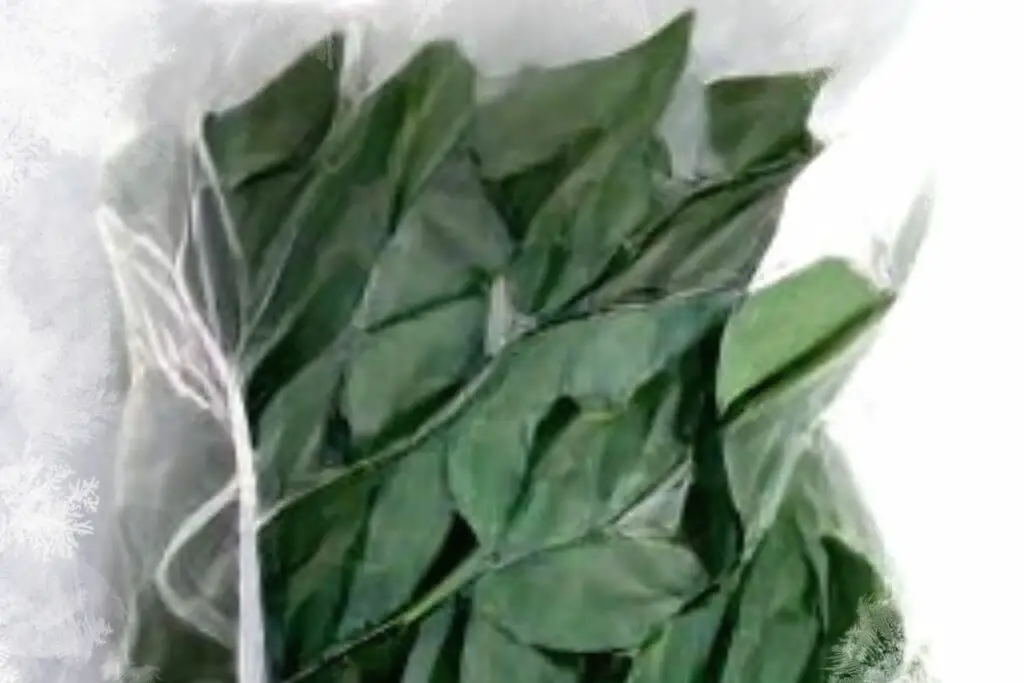
Curry leaves can be frozen in a number of ways. One way is to chop the leaves and then place them in a freezer-safe container.
Another way is to place the leaves on a baking sheet side by side and then freeze them. That way, they will not stick to each other and will be easy to use later.
Once frozen, transfer them to a freezer-safe container or freezer bag and place them back in the freezer.
When you need to use them, just take out as many leaves as you need and add them straight to your dish at the beginning of cooking, along with cumin seeds; there is no need to thaw them.
When stored well, curry leaves can last up to one year in the freezer, so don’t forget to label the freezer bags.
Read Also: Authentic Garam Masala Ingredients List And Quantities.
2. Store Them In The Fridge
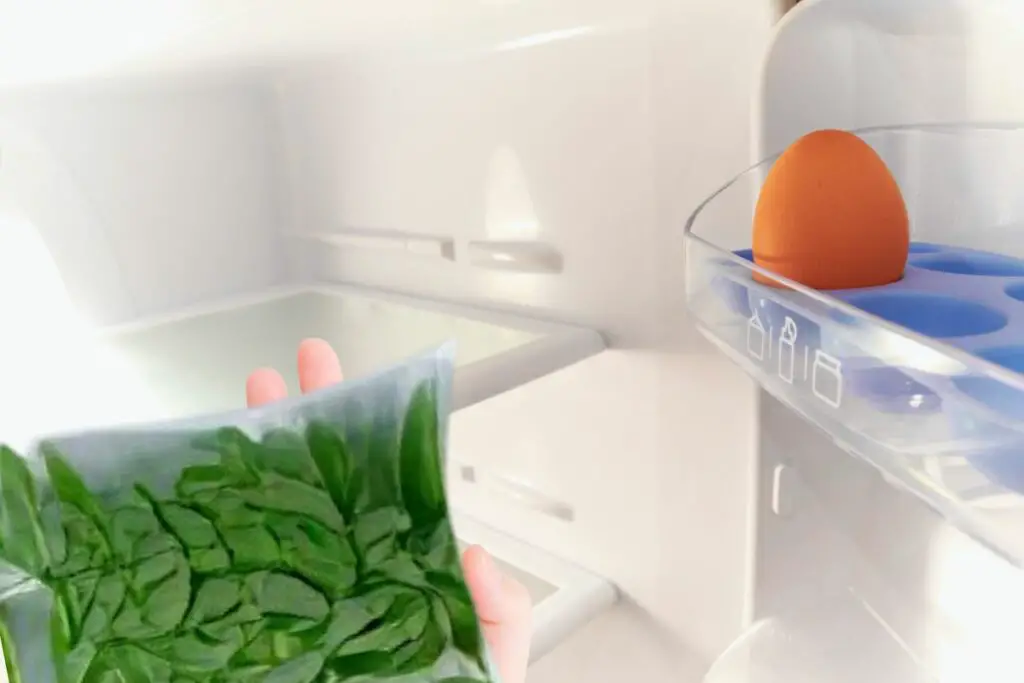
If you plan to use your curry leaves within a week or so, to ensure their freshness, you can keep them in a ziplock bag in the fridge.
However, I have noticed that if I wrap them in a paper towel first and then put them in an airtight glass jar or a container, it will prevent them from drying out and losing their flavor for an extra few days.
Keeping curry leaves in the fridge will help them last for up to a week.
If you notice that the paper towel gets moist, replace it with a new one. Also, if some of the leaves start to wither or change color, remove and discard them.
3. Store Curry Leaves On Kitchen Counter

One way to preserve curry leaves is by immersing the stems in water, kind of like flowers. This method works best if the leaves are still attached to the stem.
Fill a jar with water and place the curry leaves stem-side down inside the water. Make sure that the stems are completely submerged in water. The water will help keep the leaves fresh longer and slow them from drying.
You can keep the jar on the kitchen counter or as well as in the fridge if you have room. That method will also give the leave about one-week shelf life before they start to wither and change color.
If the water starts to get a bit soggy, replace it with fresh water.
4. Dry Them Quickly In The Microwave
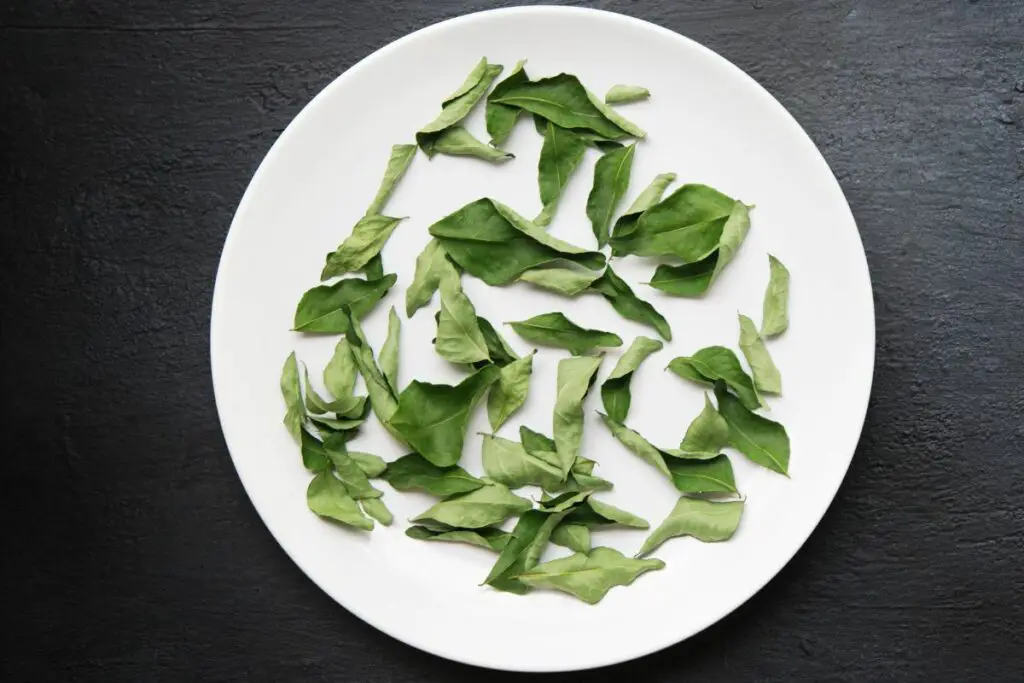
Yes, you can spread the leaves on a large tray and leave them to dry for 4 to 5 days, but there is also a super fast way to do it. If I don’t have a large amount, then I usually dry my curry leaves in the microwave, which only takes minutes.
Below are the instructions on how to dry curry leave in the microwave:
Note: If you are not a big fan of microwaves, check out these three other ways to dry herbs at home and my other tips and tricks for the best result.
Best Organic Air-dried Curry Leaves
If you can’t find fresh curry leaves in your locks supermarket, or you don’t feel like drying them yourself, check out my favorite organic air-dried curry leaves on Amazon that are not crushed or broken.
TAP ON IMAGE TO VIEW PRICE
Frequently Asked Questions
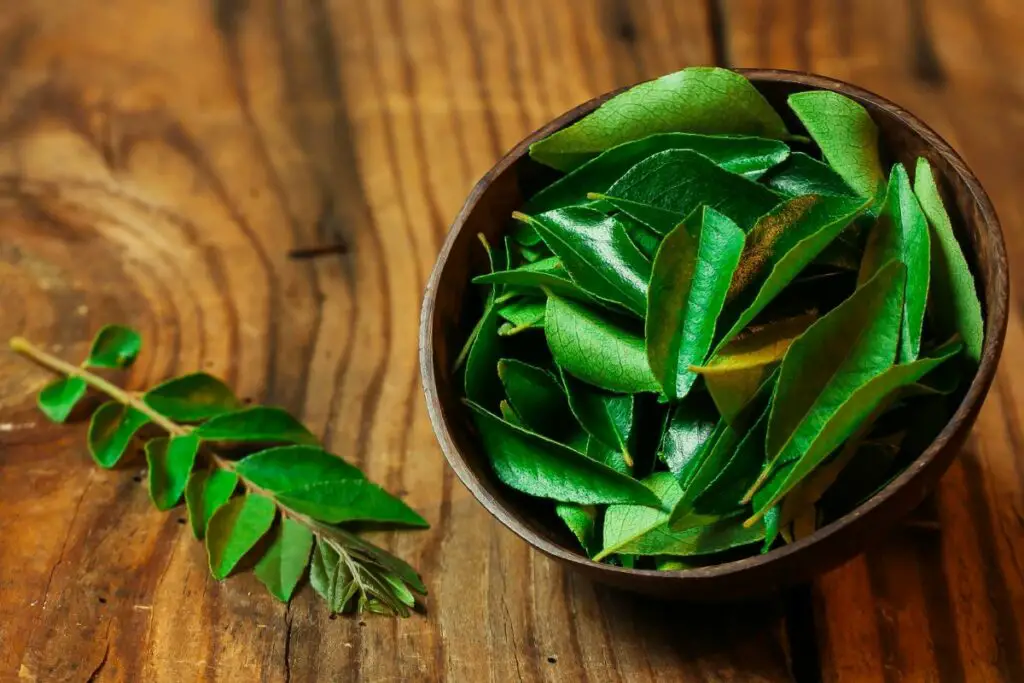
What do curry leaves taste like?
Curry leaves have a nutty, slightly bitter-sweet taste that is often described as being similar to a combination of lemon, fenugreek, and mint. But some say that they have a more herbal feel, similar to kaffir lime, basil, or kaffir lime.
How many curry leaves to use in a recipe?
The number of curry leaves to use in a recipe will vary depending on the dish being prepared and your personal taste. For example, a simple dish like dal may only require 10 fresh curry leaves, while a more complex dish like chicken curry will require 20 or more. In general, however, it is safe to say that most recipes will call for between 10 and 20 fresh curry leaves or 20 to 40 dried curry leaves, as dried ones are less potent in flavor.
Are curry leaves and curry powder the same?
Curry leaves and curry powder are not the same. Curry leaves are the leaves of the curry tree, and curry powder is a mixture of ground spices that typically includes cumin, coriander, turmeric, dry mustard, and peppers. Curry powder does not necessarily contain curry leaves, though some blends may include them.
What color are fresh curry leaves?
Curry leaves are typically shiny and dark green color when fresh. However, they can also vary in color depending on their stage of growth, with younger leaves being lighter in color and older leaves being darker. The color of curry leaves can also change when they are dried, typically becoming lighter and slightly yellowish in color.
What can I substitute for curry leaves in a recipe?
The best substitutes for curry leaves are ones that can provide a similar flavor profile. This can be achieved through the use of other aromatic herbs and spices, such as their combinations of cumin, lime zest, kaffir lime leaves, bay leaves, coriander, lemon zest, Lemon balm, fenugreek, Daun Salam leaves, and turmeric. When substituting, it is important to keep in mind the ratio of these ingredients to maintain the desired flavor balance.
Where to buy fresh curry leaves?
If you are looking to buy fresh curry leaves, a few options are available. You can purchase them at a local grocery store, ethnic market, Indian supermarket, herbs and spice shops, or online. When purchasing fresh curry leaves, make sure to look for fresh leaves that are shiny and green in color. Avoid any yellow or brown leaves, as these are indicative of leaves past their prime.
Can you grow curry leaves at home?
It is possible to grow curry leaves indoors, although it may take up to 2 years before you can get some usable leaves from the plant. Curry leaves need full sun and well-drained soil to thrive, so indoor growers must provide these conditions. One way to provide full sun is to place the curry plant near a south-facing window.
Read Also: Which Food Is Spicier, Mexican Or Indian? (4 Most Hottest Dishes!)
In Summary
Fresh curry leaves are quite fragile and won’t last that long. So, to keep them fresh longer, you should refrigerate or freeze them in an airtight container, increasing their shelf life from one week to a year.
Another fast and easy way to extend the shelf life of curry leaves is to dry them in the microwave; once dry, they will keep their aroma and flavor for up to six months.
If you have any comments or questions about storing or using curry leaves, please let me know in the comments below.
